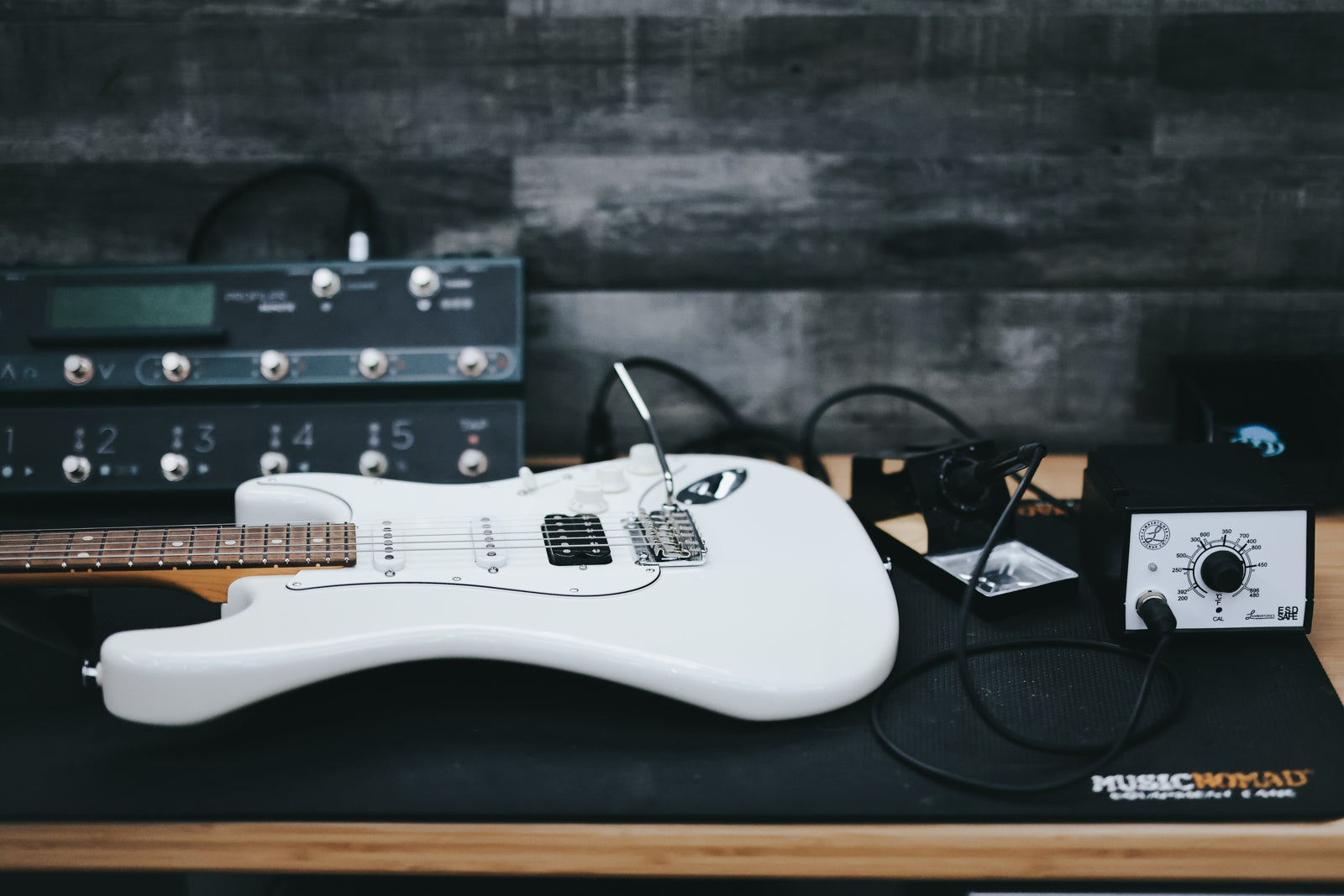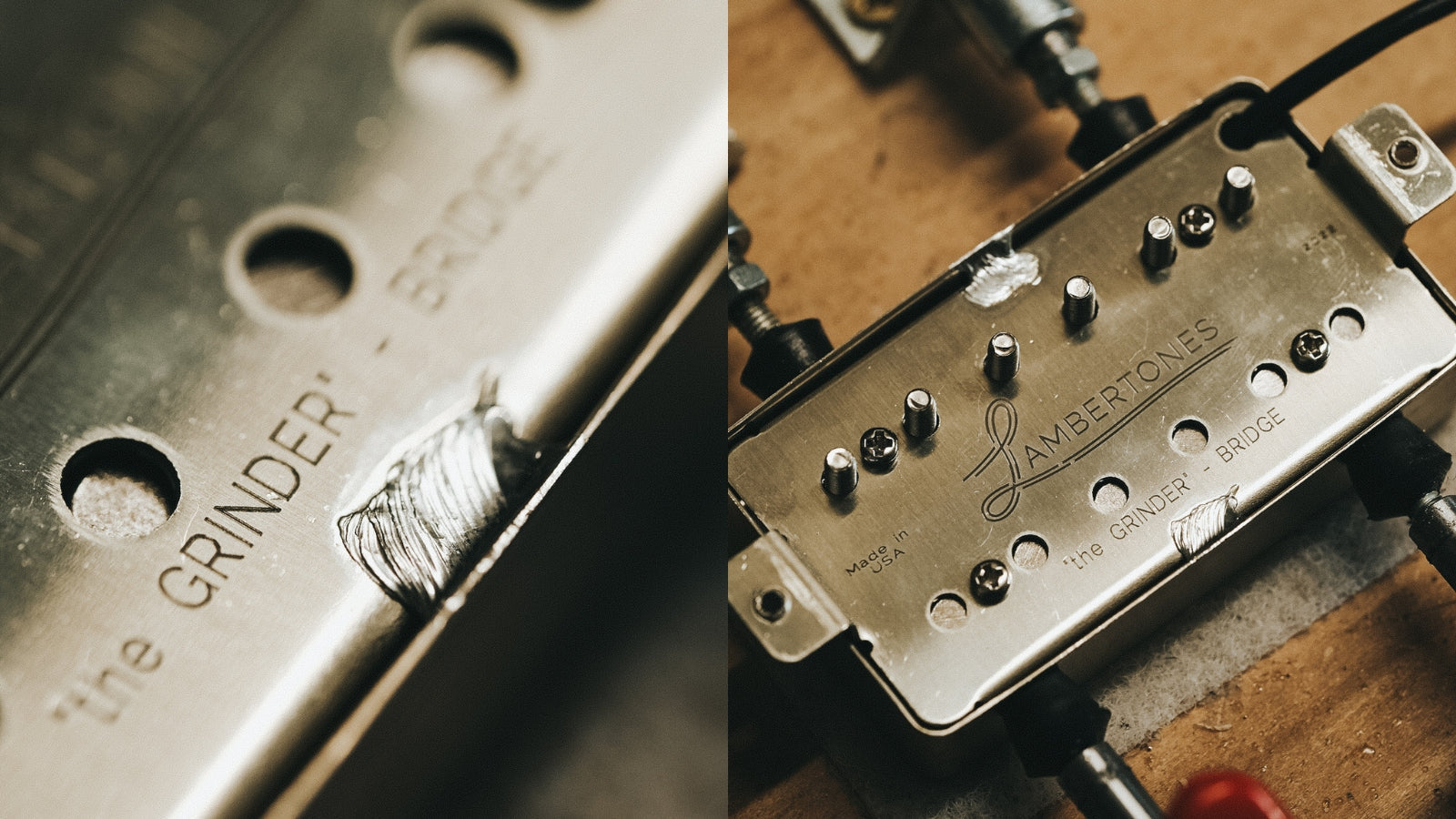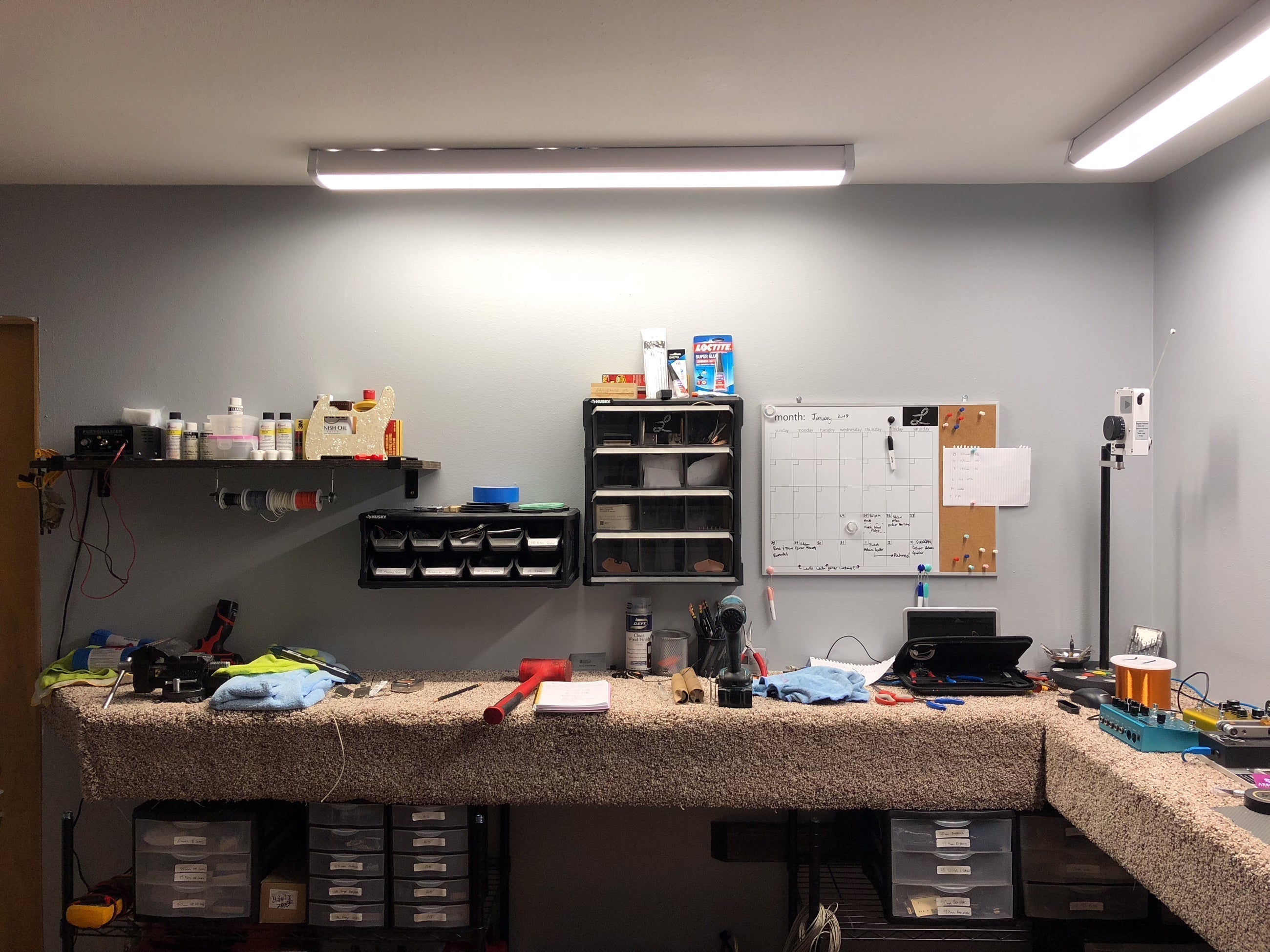
How to Install Lambertones Pickups Without Screwing it Up
When it comes to upgrading your guitar, few changes have as immediate and noticeable an impact as swapping out your guitar pickups. That's where Lambertones Pickups come in. We are musicians, passionate about guitar tone, and believe anyone can sound their best using virtually any quality of instrument as long as quality pickups are involved. Known for their crystal-clear note articulation, rich harmonic response, and enhanced dynamic range, installing a set of Lambertones can completely transform your instrument's voice. However, not everyone knows how to properly install a set of pickups, and a rush job or uninformative install can lead to serious frustration, an inoperable guitar, or in some cases even damage! That's why we're sharing this comprehensive guide on how to install a set of Lambertones Pickups, or any other pickup set for that matter, without screwing it up.
If you're new to guitar mods or just want to be sure that you have all the knowledge possible for a successful install, this guide will walk you through each step ensuring you get the absolute best results from your new pickups.

How to Install Lambertones Pickups Without Screwing it Up
Before we dive into soldering and wires, there’s some dirty laundry we need to air out.. Pickup manufacturers don’t play nice with each other. What do I mean by that? Well, it’s not that we aren’t friendly, on the contrary - some of my favorite people in our music industry are other pickup winders, and we refer potential customers to our favorite makers all the time based on whether their tone needs line up better with their offerings. But what we don’t agree on is a standardization of guitar pickup specifications. I.e. magnet polarity, start & finish wires, etc. Let me show you a little of what I mean.
In the image above, you can see just a few examples of current pickup manufacturers' humbucker wiring schematics, not even considering single coils. Roughly 85% of them use a similar starting pattern of a North Start = Hot, yet only 47% of all listed pickup manufacturers from this wiring schematic reference table use the same humbucker color codes and magnetic polarity assignment. This means you have less than a 50/50 chance of swapping your pickups out, wire for wire, and your guitar still working as intended.
This can make it really difficult to swap in a replacement pickup because you cannot expect the wiring codes to be the same. Understanding some key variables of electric guitar pickups will help you buy the right replacement and install your new guitar pickups without a fear of incompatibility or being out of phase. Let me show you a little of what I mean.
Installing Lambertones Pickups is one of the best upgrades you can make to your electric guitar, but getting the install right is critical. With this guide on how to install Lambertones pickups without screwing it up, you'll be full of knowledge to take on your tone project with confidence.
Now, grab your wiring diagram, soldering iron, and your new set of Lambertones — and get ready to love your tone.

What Are Lambertones Pickups
Do I really need Lambertones specifically? Aren’t all pickups the same? Well, kinda. There are a LOT of great pickups out there. Lambertones Pickups are boutique, precision-wound electric guitar pickups built with premium materials and processes. They're designed specifically to deliver exceptional clarity, dynamic range, and a balanced tonal profile that cuts through a mix, helping your playing to be heard.
What Makes Lambertones Pickups Special
-
Premium Materials: Only the highest-grade magnets, wire, and components are used.
-
Purposeful Design: Every model is voiced with a specific tonal goal, whether it's the glassy cleans of “the Blondies” or the warm, responsive punch of “the Crema” humbuckers.
-
Handmade Quality: Each pickup is individually assembled and tested to a 1% tolerance for consistency across all models.
Which Types of Guitars Are Lambertones Pickups For?
-
Single-coil models (like the Blondie, Triple Shot, or Ristretto's) are perfect for Fender-style Telecaster, Stratocaster, and Jazzmaster style guitars respectively.
-
Humbuckers (like the Crema and the Grinder) work beautifully in Gibson-style LP's and 335's, PRS-style guitars, and many more dual-humbucker setups.
-
Specialty pickups like the V90 or Lamber'Tron spice up a Duesenberg-style pickup configuration, or take your Gretsch-style vintage Filter'Tron pickup guitar to a whole new level.
We design pickups for players who care deeply about their tone and want a pickup that enhances and reveals the nuances of their playing. If you're curious about achieving the best sound possible, check out our guide on how to get a good tone on guitar.

How To Choose The Right Pickups For Your Guitar From Lambertones
Choosing the right pickup can be just as important as installing them properly. You don’t want to use a low-output humbucker for death metal tones… or do you..??? (Challenge Accepted)
Here are some tips to help you pick the perfect set:
Tip 1: Know Your Pickup Configuration
Unless you’re ready to rout out your SSS strat guitar body, or pay a hefty tech bill, don’t expect to slip a set of humbuckers in there. Know how much room you have and your pickup mounting type so you can shop in the right section of the tone store.
Tip 2: Know Your Playing Style
If you lean toward clean, jazzy tones, the Crema humbucker set or the Blondie single coils might be your best bet. If you prefer a more saturated and compressed lead tone, the Grinder or Red Eye humbucker pickups will suit your project better.
Tip 3: Understand Output Levels
Higher output pickups (like the Red Eye) will push your amp harder and be on the edge of breakup tone much sooner. Lower output pickups (like the Triple Shots or the Crema) will retain more dynamic range and clean headroom.
Tip 4: Don’t Break Up A Family
Are you considering replacing just 1 of your pickups at a time? We understand a fiscal method, but just know you’re introducing a world of variables when combining two or more manufacturers' guitar pickups. You only have a 25% chance of maintaining phase and hum-canceling in the middle position(s) if you don’t know what you’re matching up, so if you can, keep your guitar pickups in a complete family and buy a full set.
Tip 5: Consult the Pros
Don't hesitate to contact the Lambertones team for a personal recommendation based on your rig, playing style, and goals. You can also check out our guide on how to get a good tone on guitar for more in-depth tips!
How to Install Guitar Pickups Without Screwing it Up
Tools to have on hand:
- Soldering iron & solder
- Screwdrivers
- Wire cutters & strippers
- Multimeter (optional, but helpful)
- Heat shrink tubing or electrical tape
- A good wiring diagram (check ours here!!!)


Here's how to install your new Lambertones pickups without risking your tone — or your sanity.
Step 1: Plan Ahead
Before you even unscrew the first pickguard screw, grab your wiring diagram. Double-check which wires go where, especially if you're installing pickups with coil-splitting options.
Step 2: Before and After
Take a few pictures of the existing wiring, especially if the guitar is working properly, because now you have a reference on how to put it back together in case something goes wrong, or your diagram doesn’t match perfectly with what you have in your instrument.

Step 3: Remove the Old Pickups
I do this one at a time (if you’re installing a set). Desolder the old pickup wires carefully if you can, or cut them leaving the longest length possible on the pickup wires. Make a note (or a photo) of which color wire connected where. Unscrew and remove the old pickups.

Step 4: Test Fit the New Pickups
Before soldering anything, fit your new Lambertones Pickups into the guitar cavity. Make sure they sit properly and that the pickup conductor wires are routing through the appropriate passages, and the lengths are sufficient.
Step 5: Connect the Grounds
Start by soldering the ground wires — usually to the back of a volume pot. A good ground is critical to create a noise-free signal path. Use just enough heat to “pool” the solder, but not so much that you scorch your wires, shielding, or the potentiometer's internals. A good rule of thumb for leaded solder is 650-700 degrees Fahrenheit, or 800-850 degrees Fahrenheit for lead-free solder.

Step 6: Connect the Hot Leads
Solder the "hot" (signal) leads to the correct lugs on the volume potentiometer or switch according to your wiring diagram. If you’re soldering to a switch, blade style or toggle, pay close attention to pickup positions you referenced from step 2. Otherwise, you might have your bridge tone coming from the neck switch position, yikes!
Step 7: Manage the Wires
Neatly route the wires so they don't bunch up or interfere with the pickguard sitting flush to the body, etc. Use zip ties, heat shrink tubing, or electrical tape if you have nothing else. Movement creates wear, and wear requires maintenance at best or failure at worst.
Step 8: Test the Connections
Before buttoning everything up, plug a ¼’ instrument cable into an amp and gently tap the pickup screws or magnets with a screwdriver. You should hear a distinct pop. Alternatively, if you have your multimeter, you can select ohms (resistance) and put one end of the probe on the sleeve of the guitar cable and the other on the cable's tip. Roll all knobs to 10 and flip the switch into each position measuring the resistance of the entire circuit and match that to the manufactuer listed spec. (Keep in mind that in-between positions are in parallel, so the resistance value will be much lower, very roughly half, compared to each individual position) If you’re not getting a reading, recheck the wiring.

Step 9: Adjust the Pickup Height
Adjust your new pickup height to the manufacturer's recommendation as a starting point, and dial in your personal rig from there. (Pro tip: tone can change dramatically with small height adjustments, so go and reference our in-depth guide on how to dial in your pickup height like a pro at home here!)!)

Step 10: Enjoy Your New Tone!
You've done it! Now you can enjoy the amazing clarity, depth, and richness that Lambertones Pickups are known for.
Common Mistakes to Avoid When Installing Lambertones Pickups
Mistake 1: Forgetting to document the original wiring or not using a wiring diagram. My father always told me to “measure twice, cut once.” Double-check before cutting or desoldering any connection, just in case you need to work backwards to find an error.
Mistake 2: Overheating the pots or wires with the soldering iron. Quick, clean joints are the goal.
Mistake 3: Skipping a continuity (resistance) check. A quick check with a multimeter can catch errors early, meaning you don’t have to remove those brand new strings you just put on because you missed a ground wire, dangit!
Mistake 4: Not securing wires properly, leading to broken connections over time.
Mistake 5: Setting pickup height too high or too low. You don’t know what you could be missing if you don’t dial in your pickup height.
Take your time. Your tone will thank you. If you're curious about if you could love your tone with Lambertones Pickups installed, you can check out our best selling single coils pickupsand our best selling humbucker pickupshere, we are excited to welcome you to the family!




Leave a comment
This site is protected by hCaptcha and the hCaptcha Privacy Policy and Terms of Service apply.